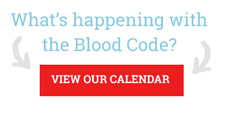Why Institutional, Community Type 2 Diabetes Prevention Doesn’t Work – by, Richard Maurer
Kahn R, Davidson MB. The Reality of Type 2 Diabetes Prevention. Diabetes Care. 2014;37(4):943-949.
A study in Diabetes Care was published this week that brought attention to the glaring failure of institutional type 2 diabetes prevention. I live in a community where the regional hospital corporation slyly changed it’s name to incorporate the word “Health”. This institution, statewide, receives the most grant and federal funding to initiate disease prevention programs. And these researchers from Cincinnati report the glaring truth, the hospital and community programs for diabetes prevention are failures. Fiscally, the hospital business relies on disease management for it’s income. So who put hospitals in the position of prevention?
There are countless influences that have put the hospitals financial health above yours or my long-term wellness. Suffice to say that the business is looking out for itself, as cruel as it sounds and therefore as individuals, we need to look out for our health with the same persistent interest. Publicly funded diabetes prevention programs are just the tip of the iceberg for only one condition, so why do they fail?
Insanely, Diabetes Associations and all other medical associations promote a low-fat diet. A low fat diet increases your relative intake of carbohydrates, it’s simple. Dietary carbohydrates result in a lot of insulin secretion and dietary proteins to a lesser degree. Dietary fats are the only foodstuffs that don’t raise your insulin. A diet rich in fats actually promotes healthy insulin levels and a move away from the insulin resistance that causes diabetes.
Furthermore, recommendations for type 2 diabetes prevention tirelessly tell us to switch from refined grains to whole grains. But whole grains are high-carb, diabetes-promoting foods, that contain virtually the same carb content as the more-refined version of the same grain. Basic math shows that the difference in carb content is negligible—41 versus 44 grams of carb in 1 cup of brown versus white rice respectively. The nutrient content difference is negligible, too. There is some extra insoluble fiber in whole grains, but the truly beneficial soluble fiber content is the same between the two. Proper guidance should be to dramatically reduce starchy carb content.
Every institutional program for diabetes prevention wrongly fixates on “obesity” as a major cause. They then resolve to “fight the obesity epidemic” to prevent diabetes. Well, again – for many people, they have it wrong. 39% of adults that develop type 2 diabetes are mid to low body weight. Furthermore, weight loss programs at major hospitals use techniques that cause muscle loss rather than fat-loss. As Step Two of The Blood Code notes, the scale lies. You can read more about the Thin Diabetic in my post here.
Should we publicly stop funding these community initiatives for type 2 diabetes prevention? As they are—yes! How about a financial incentive that goes directly to individuals who improve their insulin resistance as seen through blood test results. Or better yet, perhaps all the incentive we really need is a genuine desire for optimal health for us, our families and our communities.
Check out NUSI, an organization that promotes scientifically rigorous and rational dietary advice. There is hope institutionally.




Good Evening! I have just purchased your book and look forward to reading it! I have been following your blog since the release of your book in March. I wanted to reach out and thank you for giving me that extra incentive to follow my dreams. Approximately 5 years ago, I too started a journey towards better health and have since become a believer in integrative medicine. I started out by becoming a patient of Josie Skavdahl, ND is Topsham. My life has been completely changed. I had been reluctant to start my educational journey with a 2 year old and still trying to get my body back into its comfortable metabolic zone. Reading about your book release inspired me and gave me that extra “umph” I needed. Today, I have been accepted to Simmons College in their FNP program and look forward to taking that first step in my journey towards becoming a practicing NP using ALL facets of medicine. I do not being my studies until November, but I would love the chance to learn about your experiences practicing with the Blood Code and also resources for training in practice. Any advice you may have or any shadowing opportunities that may arise would be welcome! I hope you had a great Memorial Weekend. Thank you for your time.
Lyndsey